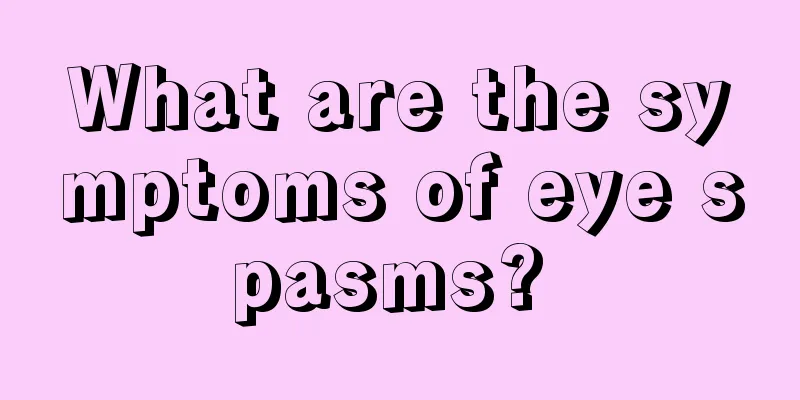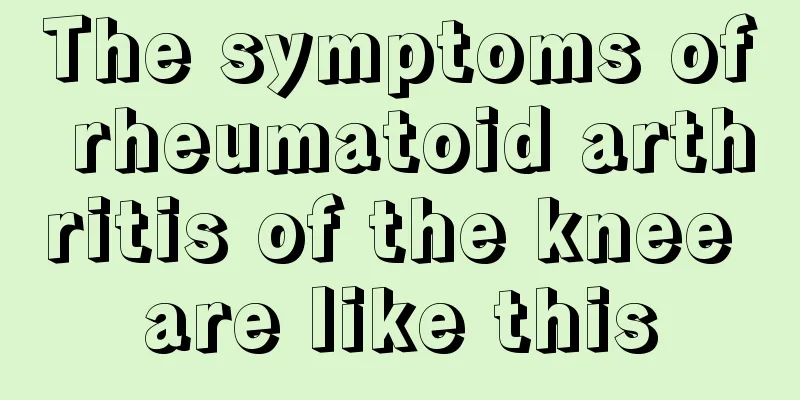What are the symptoms of eye spasms?

|
Blepharospasm is very common among middle-aged and elderly people and it is a neurological disease. The occurrence of eye spasms can cause great trauma to the patient's physical and psychological health. It will also affect the appearance. Eye spasms are also easy to misdiagnose. Many people go through a lot of torture and pain before they are diagnosed. Let’s take a look at the common manifestations of eye spasms. Clinical manifestations of eye spasms: (1) Primary blepharospasm: It is caused by spasmodic contraction of the orbicularis oculi muscle, resulting in involuntary closure of the eyelids. It is often a bilateral lesion with progressive progression. 2/3 are women, and most develop the disease over the age of 60. The cause is unknown. The frequency and duration of spasms vary. In mild cases, the orbicularis oculi muscle has paroxysmal, frequent small twitches that do not affect eye opening. In severe cases, the twitching is obvious, making it difficult to open the eyes, affecting vision and causing functional blindness. In most patients, symptoms stabilize within 3 to 5 years. One-third of patients have associated movement abnormalities, such as Meige syndrome, essential tremor, or Parkinson's disease. Secondary blepharospasm caused by keratoconjunctivitis, trichiasis, and blepharitis should be excluded during diagnosis. The drug and physical treatments for this disease include: clonazepam, Antan, acupuncture, percutaneous facial nerve thermolysis, etc., but all have little effect. Surgical treatments include: orbicularis oculi muscle and eyebrow muscle muscle resection combined with browplasty and levator palpebrae superioris muscle reinforcement, and selective facial nerve extraction combined with muscle stripping. However, these methods are not ideal. The side effects of the former include: forehead numbness and eyelid edema, and the latter may have serious complications of facial nerve paralysis, manifested as ptosis, lagophthalmos, corneal exposure, and ectropion. 50% of patients relapse after surgery. (ii) Hemifacial spasm: It is a unilateral lesion with periodic tonic contraction of facial muscles. Spasms usually begin in the orbicularis oculi muscle and gradually spread to other parts of the area and can occur during sleep or wakefulness. It usually starts in middle age and is more common in women. May be accompanied by unilateral facial muscle weakness. The cause is usually compression of the seventh cranial nerve root by vascular structures or a tumor at the cerebellopontine angle. Vascular lesions account for 90% of cases, and less than 1% of cases are due to posterior fossa tumors. Drug treatment includes carbamazepine, diazepam, phenytoin sodium, etc., as well as biofeedback, and surgical treatment includes muscle resection. Selective facial nerve resection. However, complications such as hearing loss, otitis media, and cerebrospinal fluid leakage may occur. |
<<: What are the symptoms of Yin deficiency fever?
>>: What are the symptoms of lung stones?
Recommend
The value of CT examination in diagnosing gastric cancer
CT examination is one of the commonly used method...
3 cases of dietary therapy for lymphoma after radiotherapy and chemotherapy
Radiotherapy and chemotherapy are commonly used t...
How big can a burn blister be before it can be punctured
If you find blisters on your skin after a scald, ...
What are the types of thyroid cancer that do not require surgery?
Thyroid cancer can be divided into papillary thyr...
What to eat during chemotherapy for lung cancer? You can eat these four types of food
After lung cancer occurs, many people will choose...
Blisters on thighs are itchy
Herpes is a very common disease in our lives, and...
What is serious tongue cancer?
Tongue cancer is a common malignant tumor that ha...
What medicine is effective for keratitis?
Keratitis is an inflammatory disease of the corne...
What should I do if my dental filling falls out?
When teeth fall out, the patient's image will...
Symptoms caused by primary lung cancer tumors
The clinical manifestations of lung cancer are cl...
What are the early detection methods for gastric cancer? There are these detection methods
The early detection method of gastric cancer can ...
Bulbous nose inheritance
Everyone wants to have a high nose bridge and a s...
Common methods to prevent nasopharyngeal cancer
The sudden onset of nasopharyngeal cancer can cau...
How do middle school students train their abdominal muscles
Abdominal muscles are a type of muscle on the sto...
How to check for rectal cancer
In recent years, rectal cancer has become one of ...









